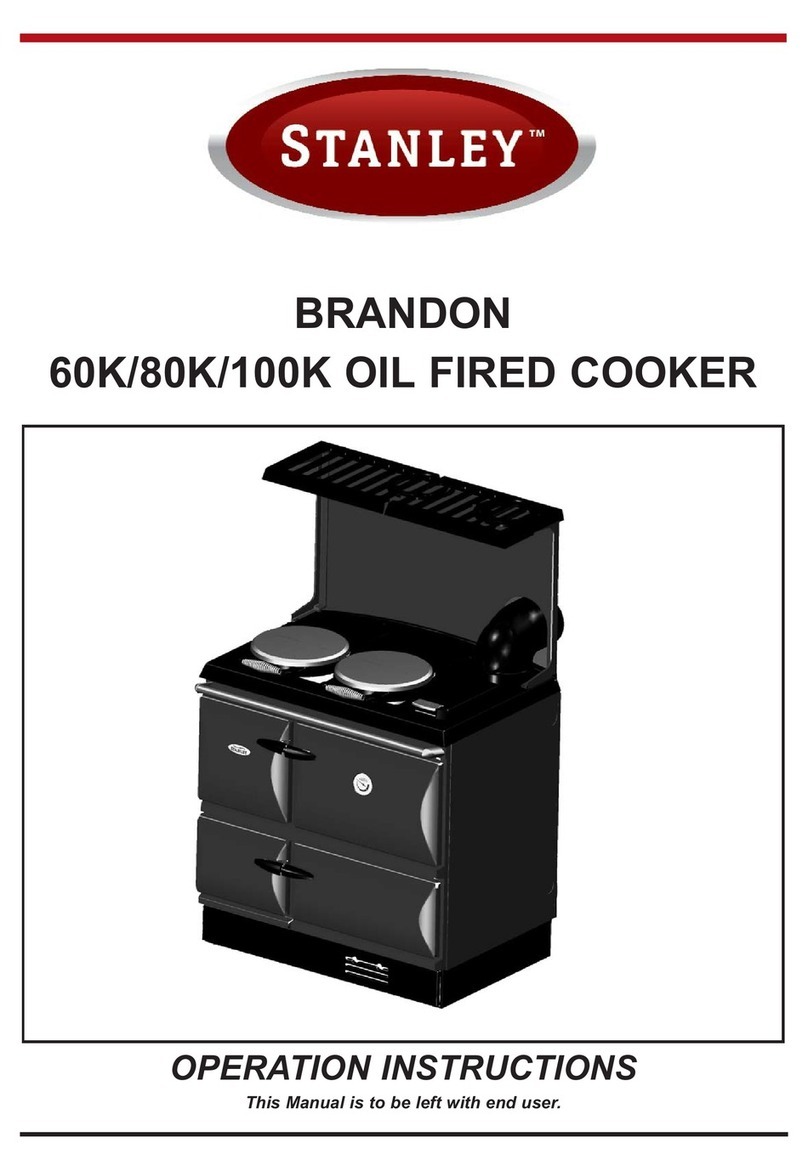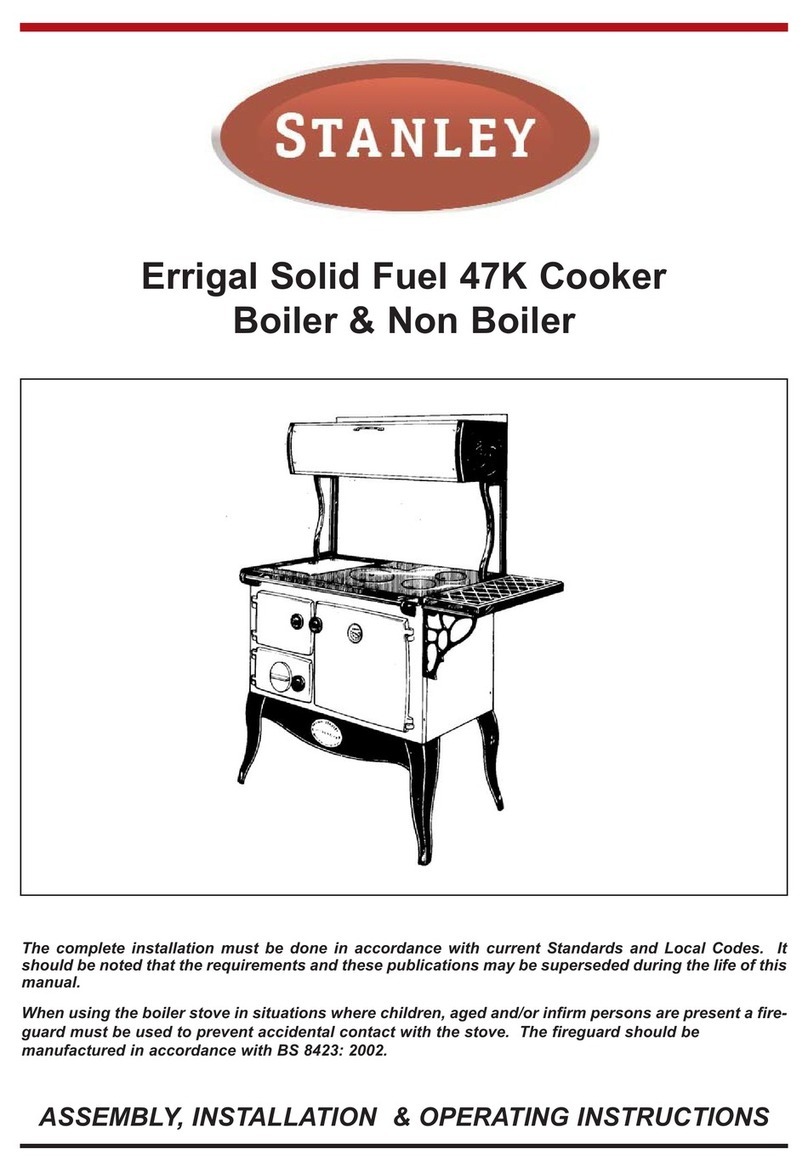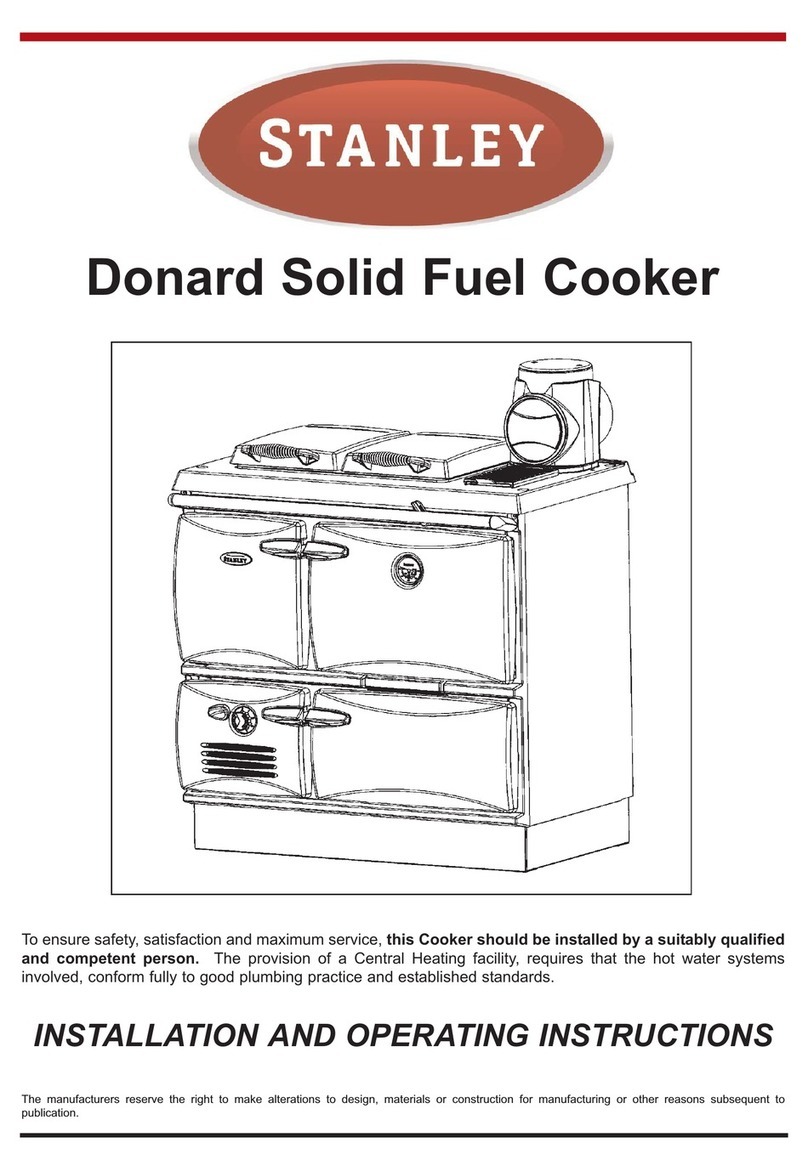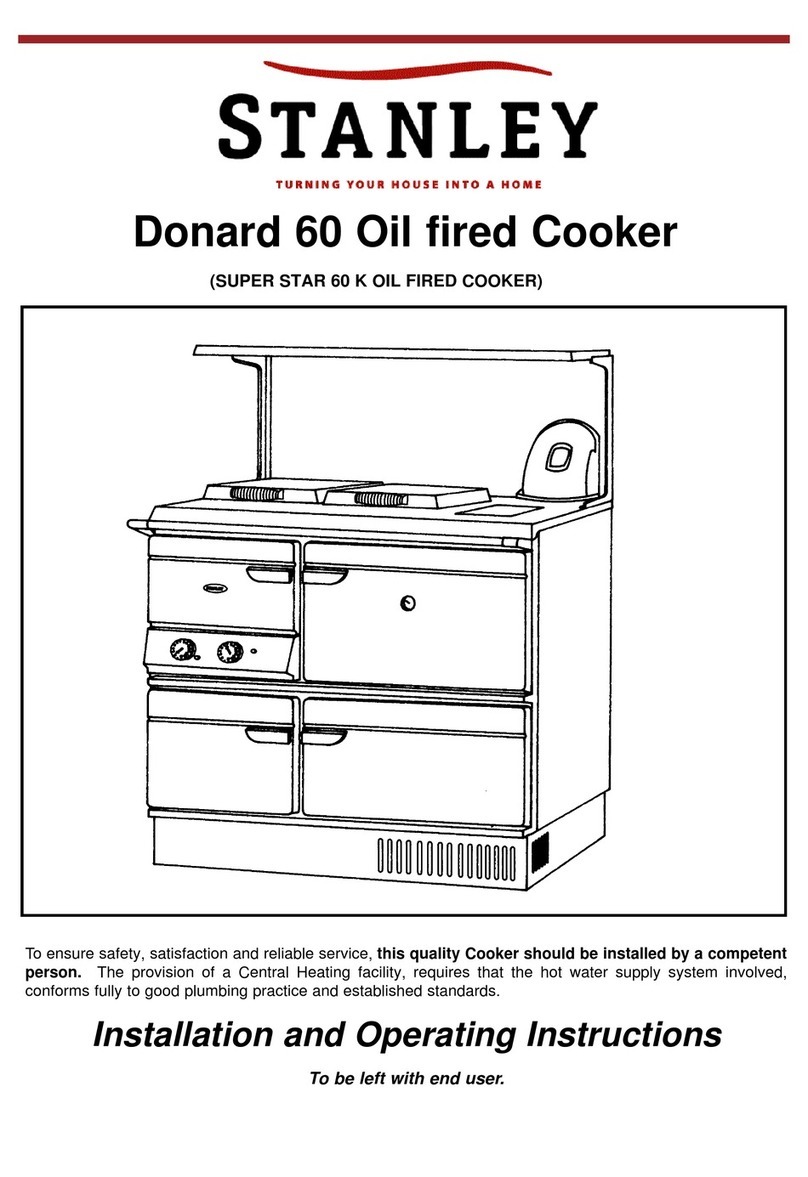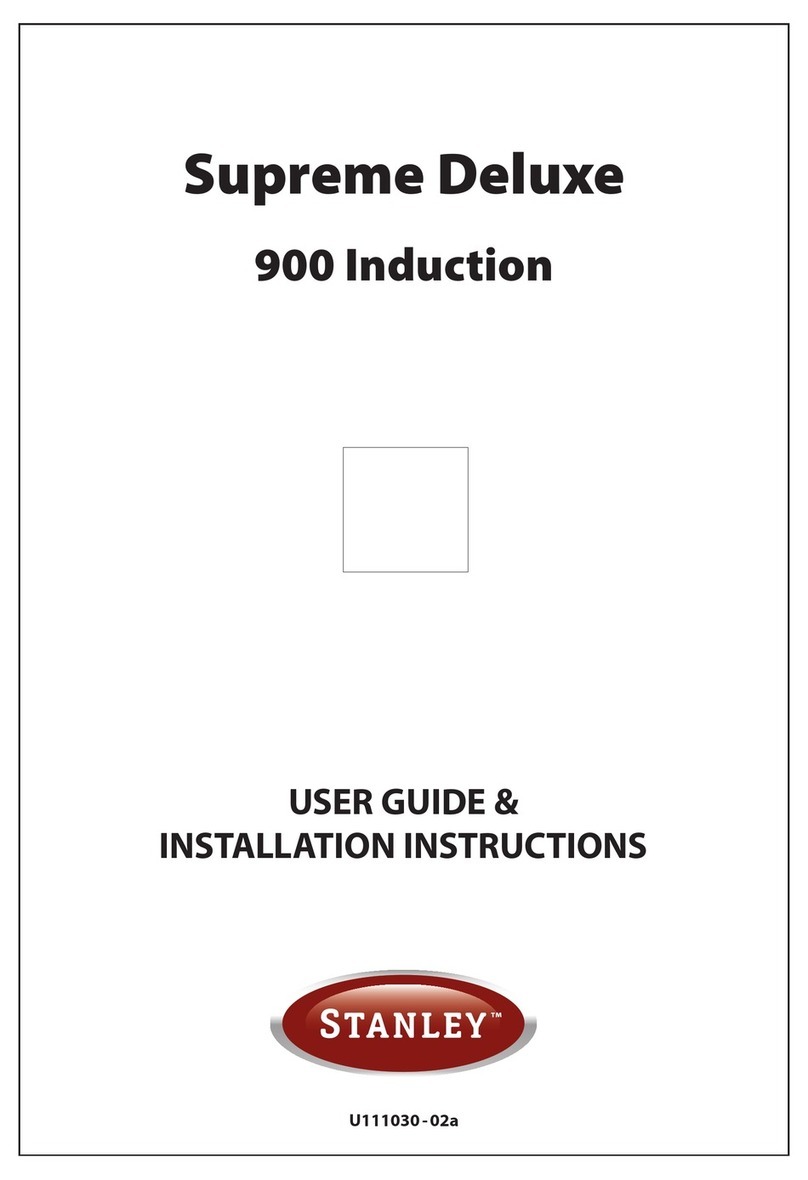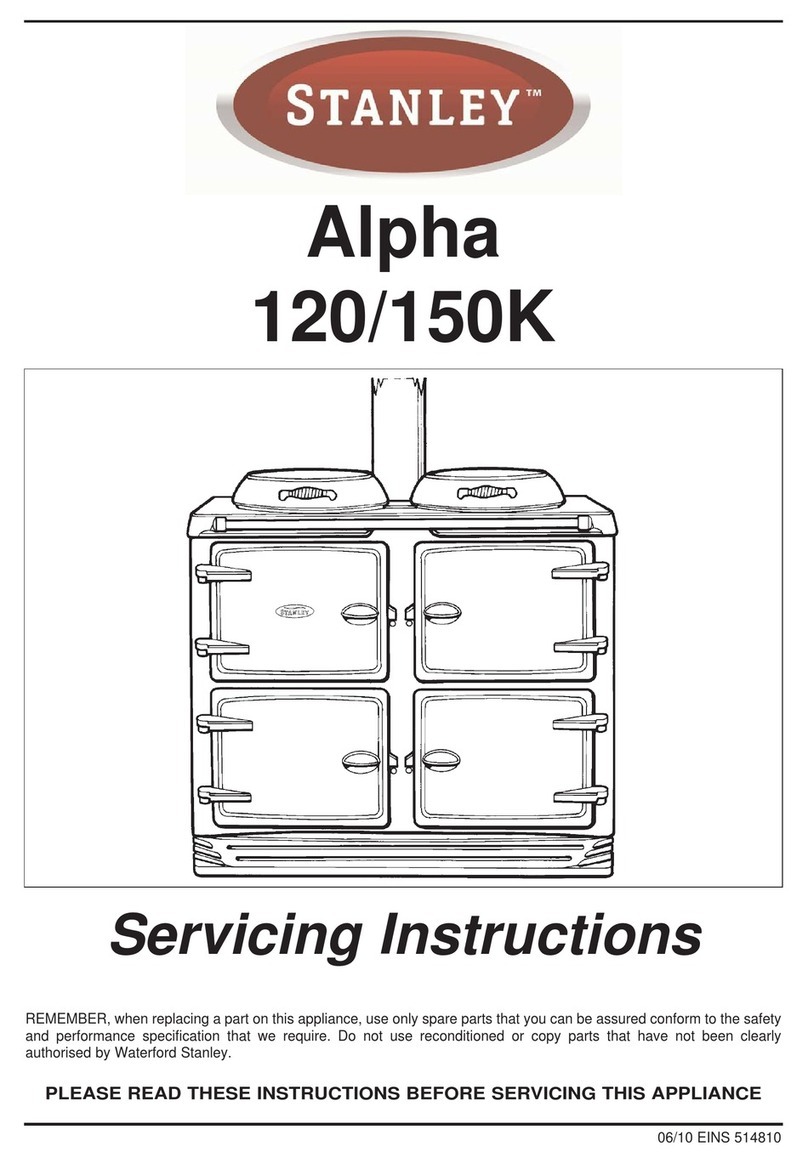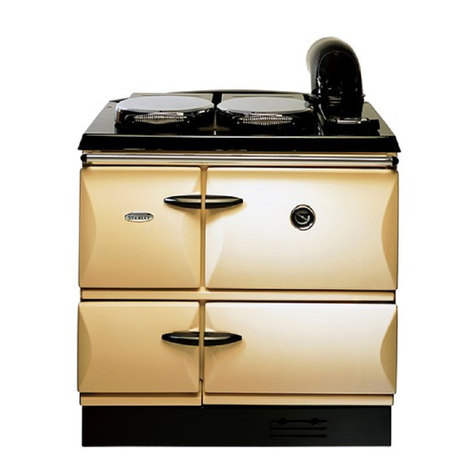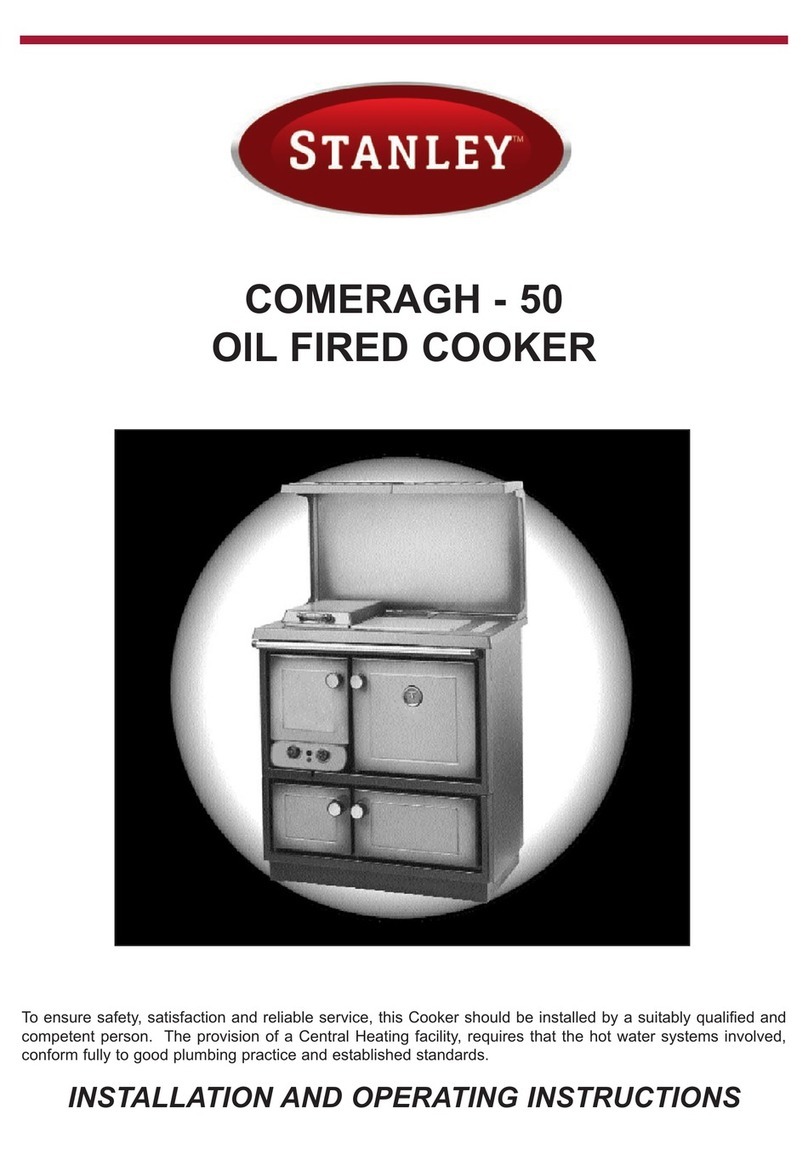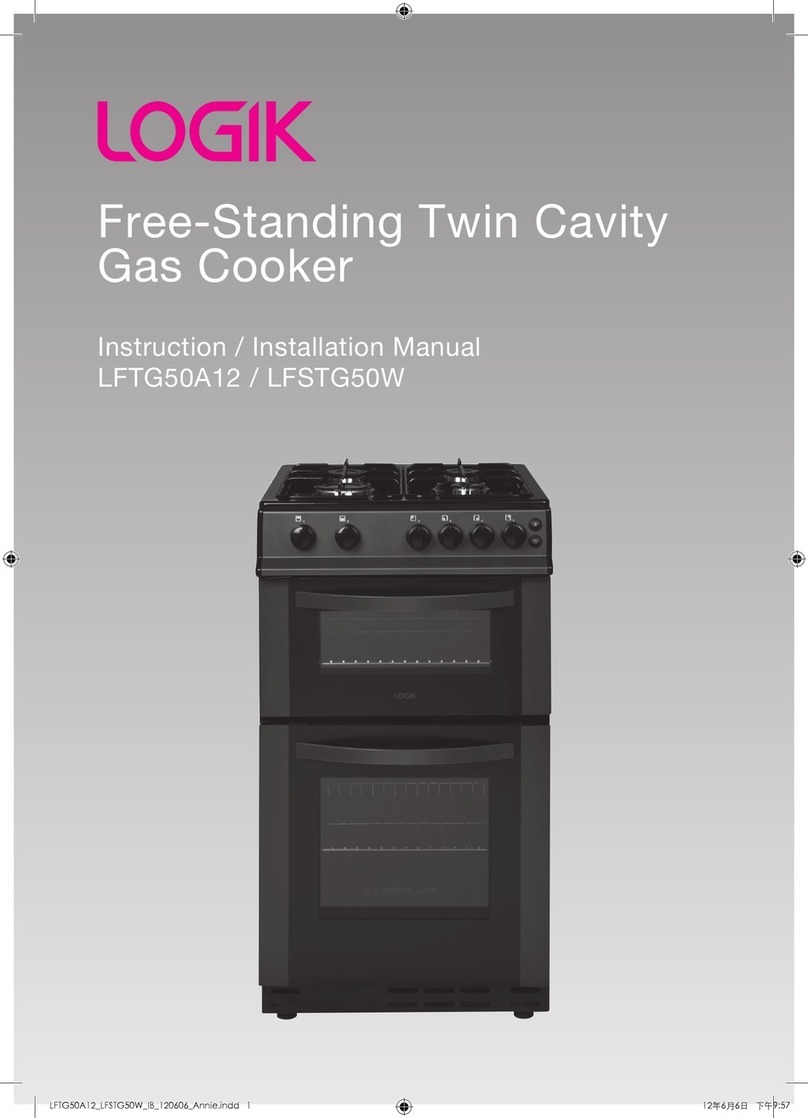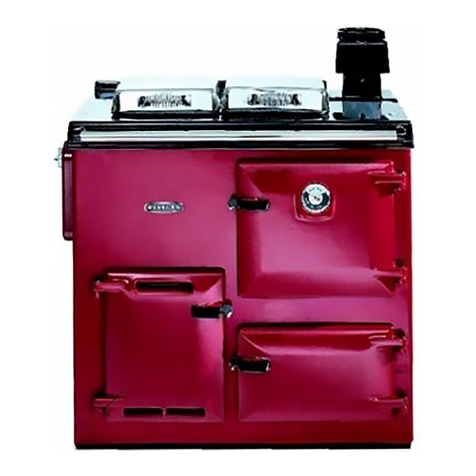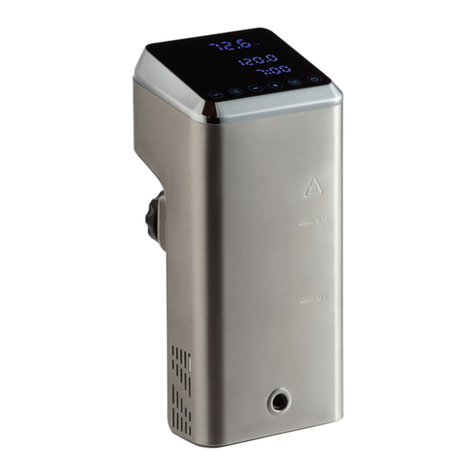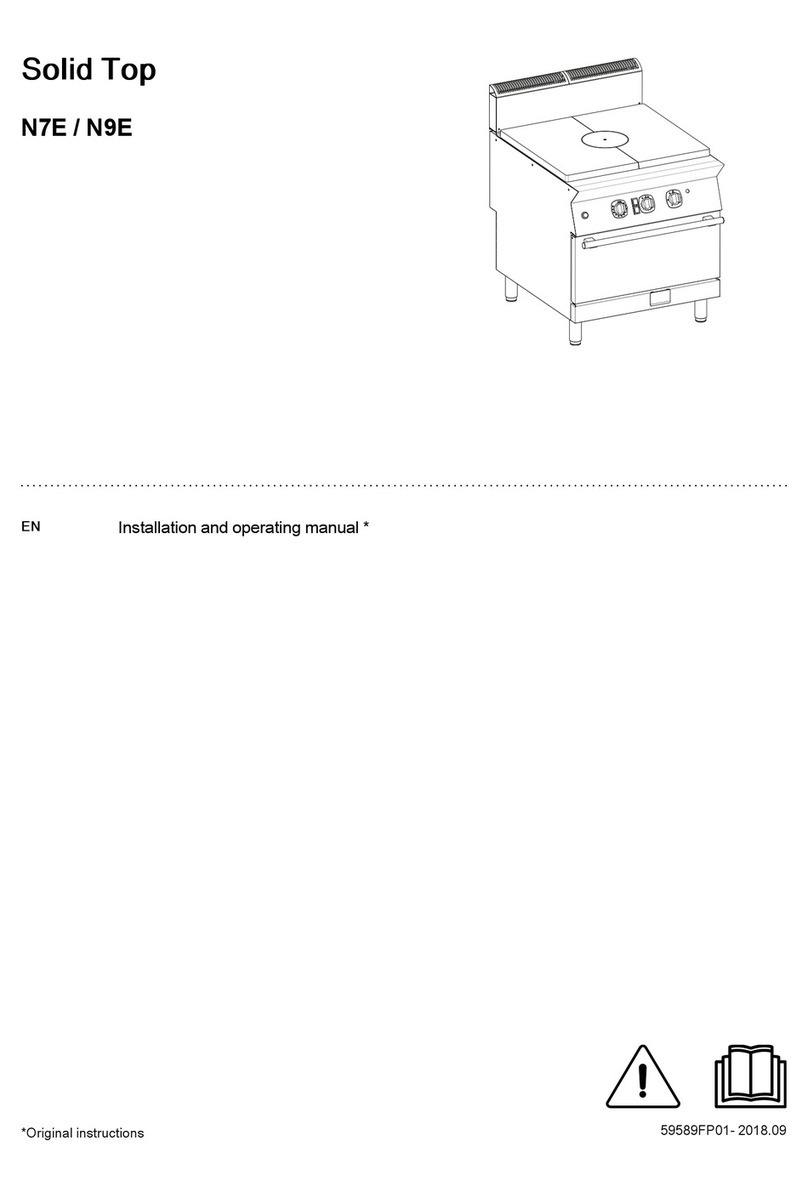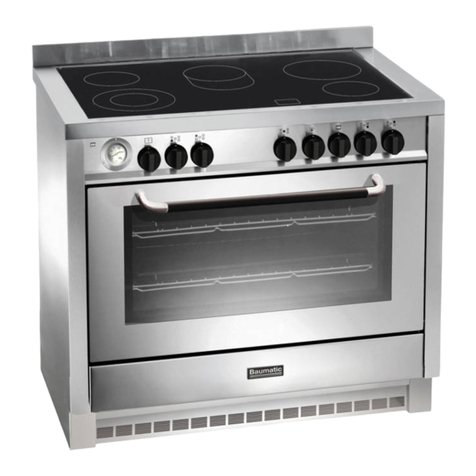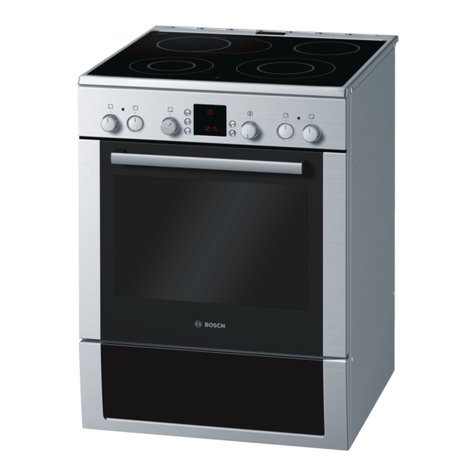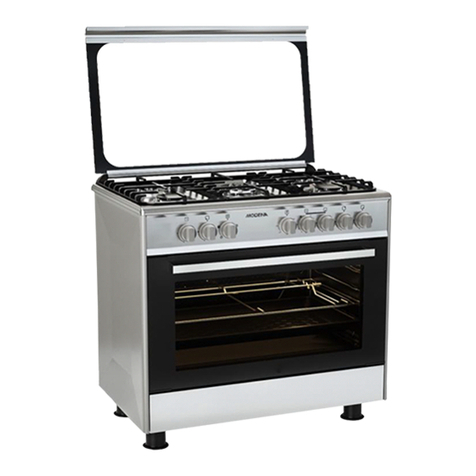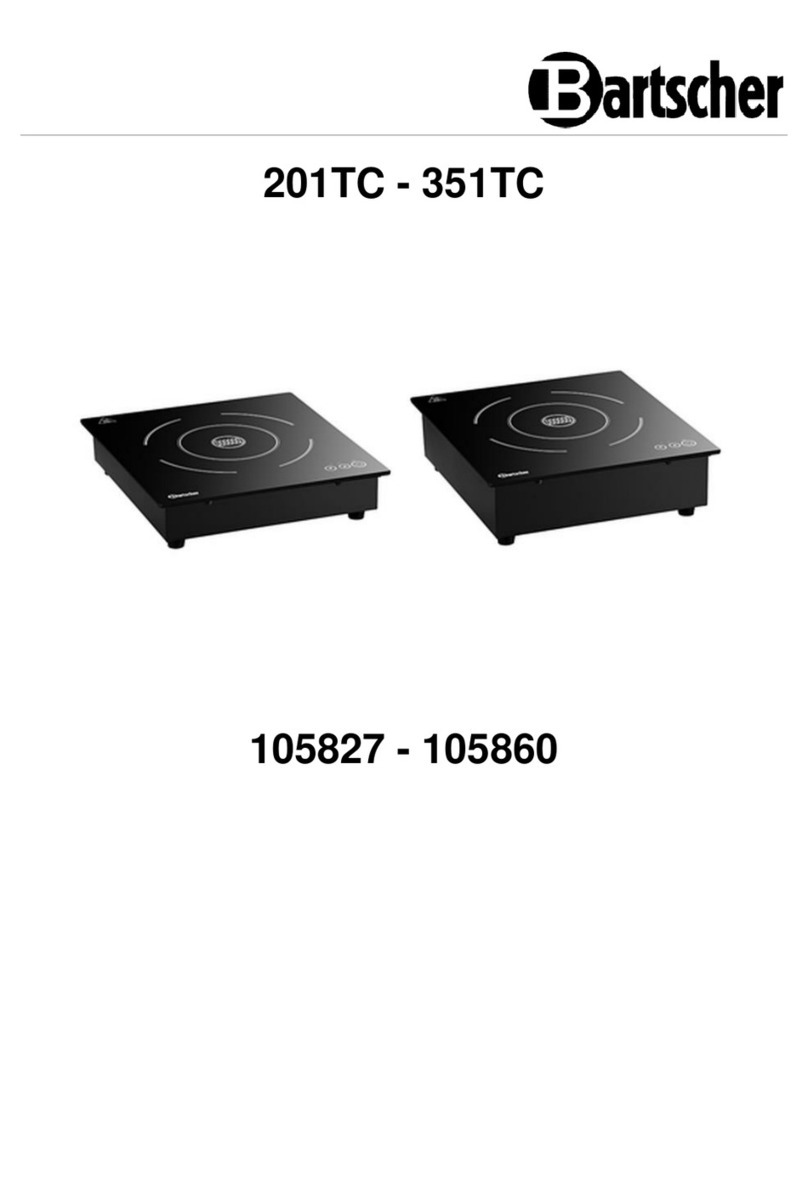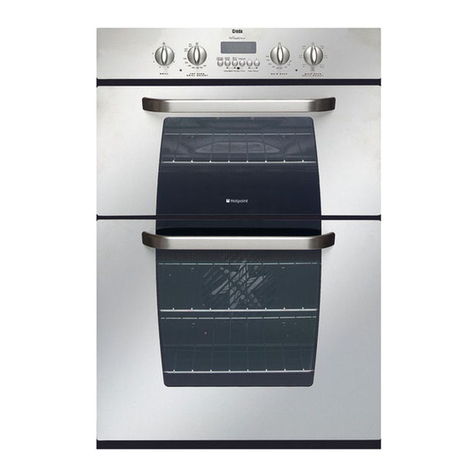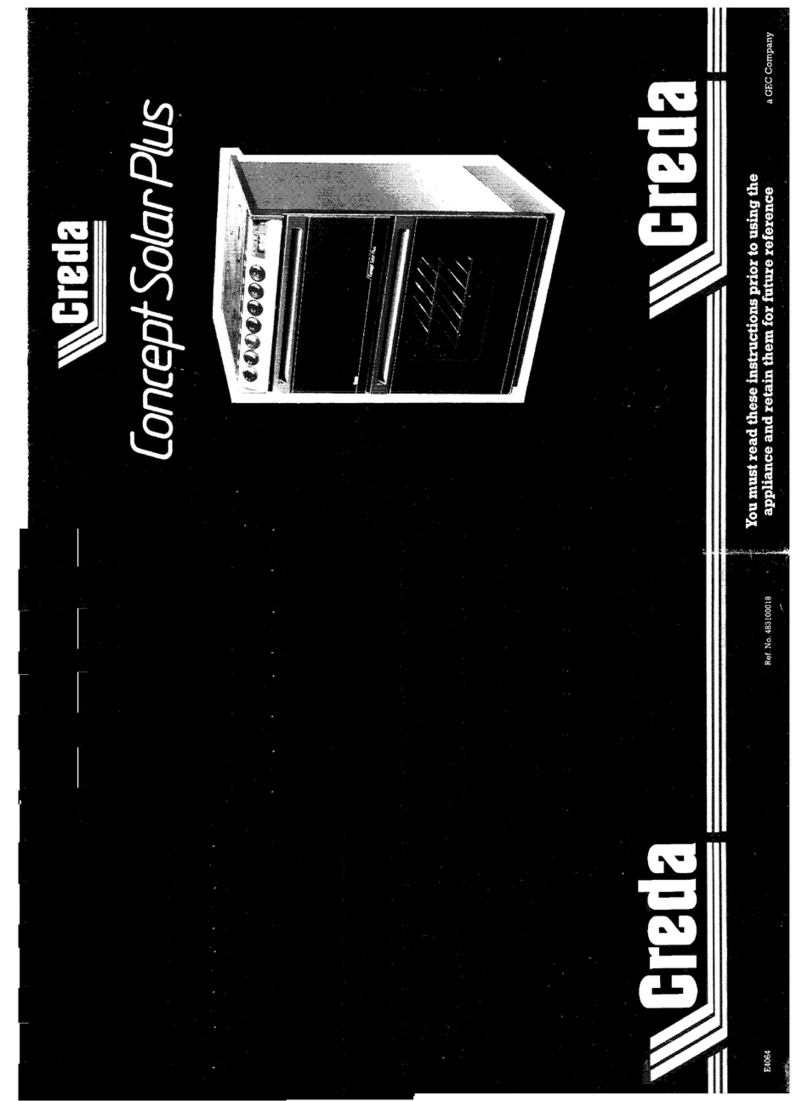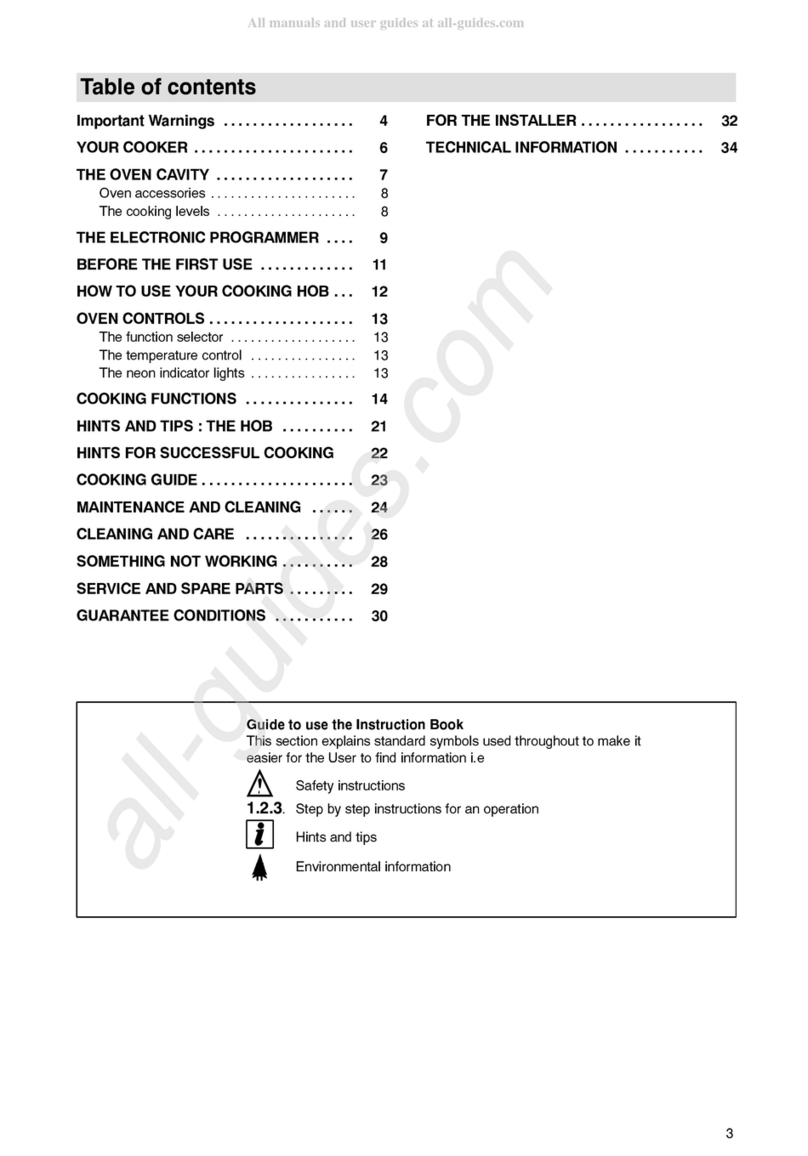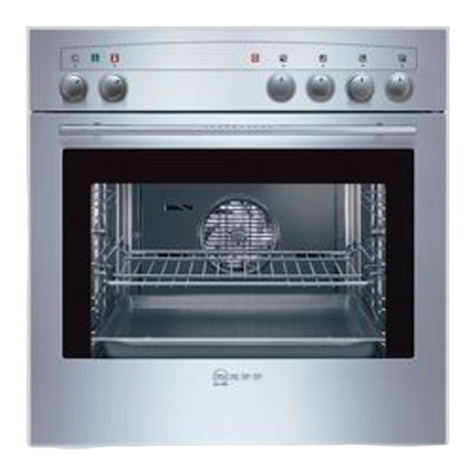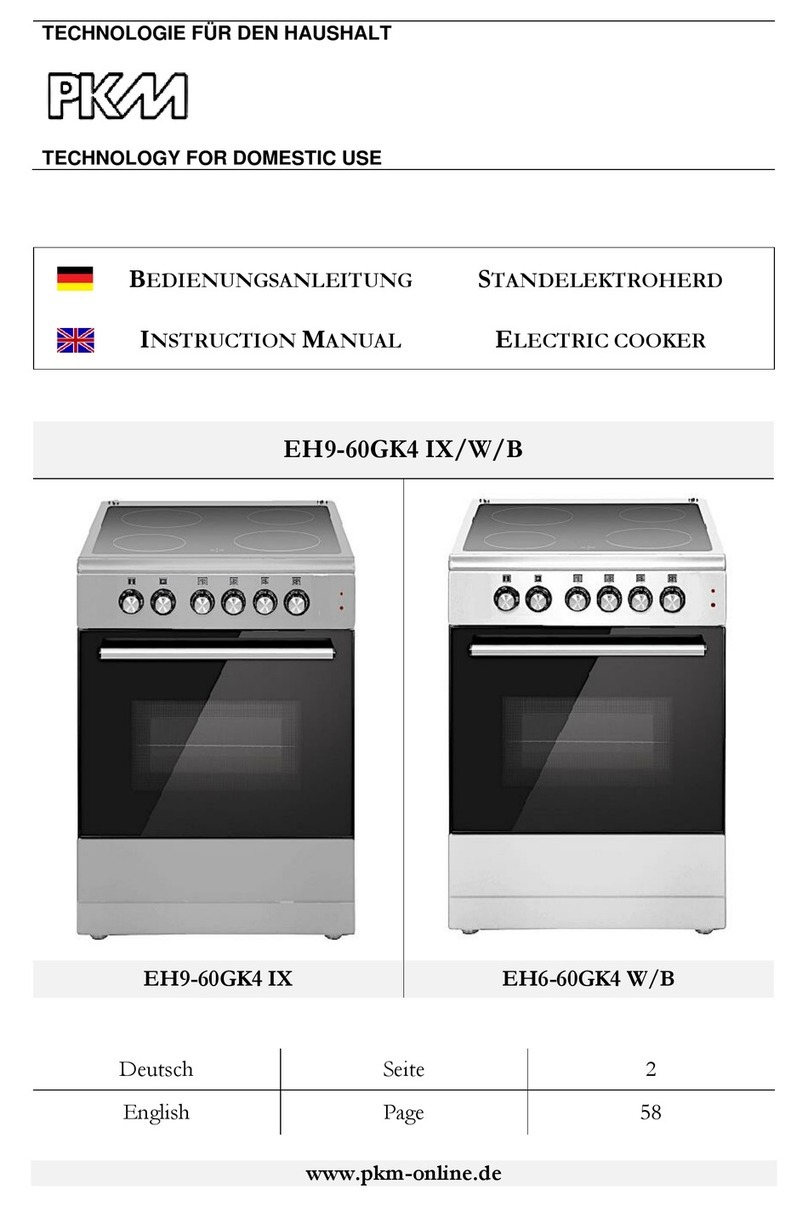9
Horizontal runs more than 450mm (18”) and 90°
bends numbering more than 2 per installation should
be avoided. f it is necessary to offset the chimney
the recommended angle is 60° to the horizontal and
the statutory minimum is 45° (see fig. 10).
CONNECTIONS
A cast iron 90° bend with cleaning door is available
with the cooker. A vertical cast iron outlet pipe with
cleaning door is also available. A flexible flue
adaptor is supplied, this is to connect the cooker
150mm (6”) bend or straight pipe to the 150mm (6”)
chimney liner.
ALL FLUE CONNECTIONS UST BE
THOROUGHLY SEALED. Blocked chimneys are
dangerous, keep chimneys and flueways clean,
read the operating instructions.
STANLEY CAST IRON PIPES AND BENDS ARE
HIGHLY RECO ENDED FOR INTERIOR USE.
WHERE THE APPLIANCE SPIGOT OR FLUE
PIPE PROTRUDES INTO THE CHI NEY, CARE
SHOULD BE TAKEN TO ENSURE THAT IT DOES
NOT BLOCK THE CHI NEY.
SUITABLE ATERIALS
* Mineral Fibre cement pipes conforming to B.S.
7435.
* Sheet metal conforming to B.S. 715. & B.S.
4076.
* nsulated metal chimneys conforming to B.S.
4543 and B.S. 5440 (a galvanised finish is not
suitable).
* Clay flue linings conforming to B.S. EN 1457.
* Pre-cast concrete chimney blocks,
incorporated into the building structure. t is
particularly important that the correct
connection block be provided at the base of the
flue, B.S. 3572.
* Cast ron or acid resistant vitreous enamel lined
mild steel to B.S. 41.
FLUE CLEANING
The flue pipe must be fitted with a cleaning plate.
The flue must be inspected annually and cleaned
when necessary.
Fig. 10
USE OF EXISTING FLUES AND CHI NEYS
When connecting to an existing chimney it is
necessary to line the flue using approved 150mm
(6”) rigid or flexible stainless steel flue liner.
An existing flue pipe or chimney that has proved to
be satisfactory when used for solid fuel can normally
be used for this appliance provided that its
construction, condition and dimensions are
acceptable. Flues that have proved to be
unsatisfactory, particularly with regard to down
draught, must not be considered for this appliance
until they have been examined and any faults
corrected. f there is any doubt about an existing
chimney a smoke test to B.S. 5440: Part 1 should be
carried out.
Before connecting this appliance to a chimney or
flue pipe which has previously been used with
another fuel, the chimney or flue pipe should be
thoroughly swept and lined accordingly.
All register plates, restrictor plates, damper etc.
which could obstruct the flue at a future date should
be removed before connecting this appliance.
Where a chimney is not to be lined a suitable void
should be provided at the base to contain any debris
which might fall from the inside wall, so as to prevent
debris from obstructing the appliance flue outlet.
(Removal of debris should be facilitated by the
provision of an access door). The void should have
a depth of not less than 250mm (10”) below the
appliance connection.
The combustion products from this appliance will
have a descaling effect on hardened soot deposits
left from burning solid fuels.
ALTHOUGH THE CHI NEY AY HAVE BEEN
CLEANED OF LOOSE SOOT PRIOR TO
INSTALLATION, IT IS I PERATIVE THAT THE
CHI NEY IS INSPECTED FOR SCALED SOOT
PARTICLES AFTER THE FIRST ONTH OF
OPERATION AND ANY LOOSE ATERIALS
RE OVED TO AVOID BLOCKAGE.
DRAUGHT REQUIRE ENTS
While inadequate draught can seriously effect the
efficient operation of the appliance, chimneys over
(5.4m) 18ft or houses built on high ground can
experience excessive draught, a steady draught of
between 1mm (0.04”) and 1.5mm (0.06”) W.G. is
required for satisfactory operation.
FLUE LINERS
Chimney’s lined with salt glazed earthenware pipes
are acceptable if the pipes comply with BS EN 1457
and must be 150mm (6”). When lining an existing
chimney, a liner approved to BS 715 and BS 4543,

